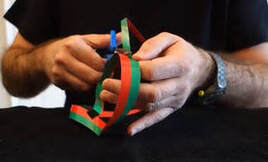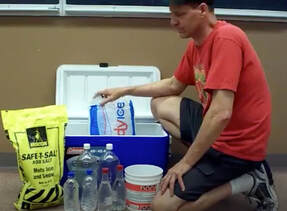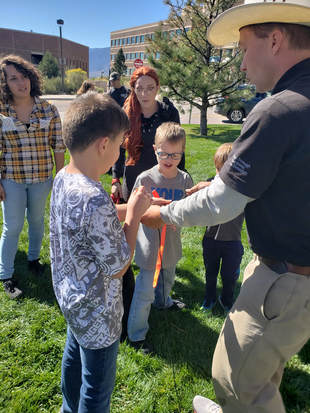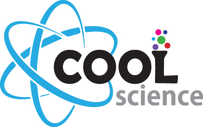
On April 16th 8 budding scientists learned how to freeze water instantly in our first Cool Science live Zoom class (a collaboration with Concrete Couch), and it went so well that we'll continue offering these free livestream classes for kids every Thursday.
Next up on April 23rd we'll show you how to perform a science magic trick that will amaze your friends, and all you need are a few long strips of paper, tape, scissors and some very cool math! You can find out more on our Try Science at Home Mysterious Loops activity page. If you want to join us live, RSVP with Concrete Couch. Space is limited as we want to keep these classes small enough to interact with everyone. Be sure to check our calendar to find out what's coming up each Thursday. Classes are usually best for kids ages 8-14, but parents are always welcome to help younger kids give it a try. You can also follow us on Facebook where we are posting a new fun activity link for kids every day. click here to leave a comment
0 Comments

Thanks to COVID-19 cancelling all of our school and library programs for the forseeable future, we're trying some new things to get you excited about science. First up, a collaboration with the folks at Concrete Couch to bring live-streamed interactive hands-on science activities into your home using Zoom video conferencing. Thursday, April 16th, 2020 at 3 pm (MDT) join us for one of our most popular science demonstrations as we show you how to super-cool water and make it freeze instantly! Sure you can just watch our YouTube video and do it anytime you want, but it will be more fun doing it together and we'll be there to answer your questions in real time! This class will be best for kids about 8-14 years old, but parents are also welcome to help younger kids give it a try.
If you want to participate, just RSVP to Concrete Couch and they will send you the link and other information you need to join the Zoom classroom. And in case you can make it live, we plan to record the class so you can watch it later. If you want to be super prepared, you can study our Cool Chemistry experiment page and maybe we'll let you teach the class ? We'll offer a new Cool Science class every Thursday at 3 pm, so be sure to check the calendar on our home page for details. And BTW, Concrete Couch will be live streaming other classes on lots of fun topics every other day of the week, so be sure to check out their calendar as well. If you have any questions you can post them in the Comments box below. Hope to see you Thursday! click here to leave a comment  On October 13th, 2018, a host of organizations joined us at UCCS to celebrate science, technology, engineering, art, and math at our massive Carnival Day for Kids. There were over 5,000 guests all eager to learn and explore the scientific world around us. Sometimes this scientific world can get very dark. CaveSim, a crawl-through electronic cave simulator where kids can get a taste of real caving while also learning about different scientific fields, was created by Dave Jackson, a man I had the pleasure of talking with at the carnival. Mr. Jackson obviously has a great passion for both caving and education…and making science cool for kids! The goal of CaveSim, as Dave told me, is to primarily teach kids about cave conservation. As the kids get geared up to enter the simulation with their helmets and headlamps, they are told to avoid touching any of the stalactites or stalagmites. Every time they touch one, the computer tracks this as one point against them. In this way, CaveSim becomes a fun, interactive challenge to see if you can get through the entire cave without disturbing the fragile underground world. CaveSim also offers kids the opportunity to learn about physics, geology, ecology, and more. One of the other demonstrations I got to see on Saturday was when Dave showed a group of kids the importance of rope pulleys to reduce friction while caving (pictured). CaveSim was widely popular at the carnival, with a great turnout. Cool Science would like to extend its thanks to Dave and the entire CaveSim crew for being a part of the Carnival Day for Kids, and we hope to see them again next year! To learn more about CaveSim, visit their website at www.cavesim.com, or check out their Facebook page @CaveSim. |

 RSS Feed
RSS Feed





